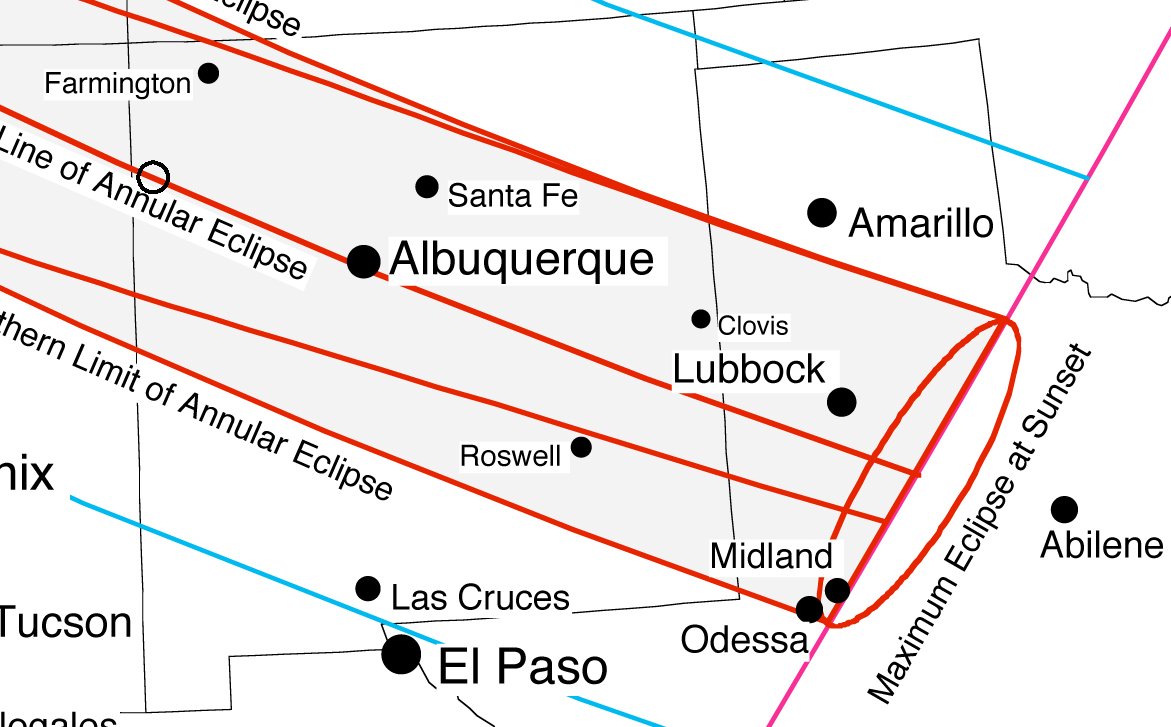
The annular solar eclipse of 20 May, 2012 started in China, passed over the northern Pacific, and ended at sunset over the western United States. Then town where I was located, Lubbock, Texas, was right at the end of the annularity path. Although numerous people and groups were coming to Lubbock for the eclipse, I decided that with the likelihood of clouds on the western horizon at that time of the year, I would rather be further westwards so that the Sun would be a little higher and that any clouds would be in the opposite direction. In addition, I also had to head to California to attend a conference 2 days later.
Looking at the track of annularity and how far a reasonable drive would be that would still give me plenty of time to find a good spot to to set up and see the eclipse, I finally decided to head just north of Gallup, near the Arizona/New Mexico border. GoogleEarth was a great help in finding what looked to be a good location! My location is indicated by the black circle in the map below.

After checking into a motel in Gallup that afternoon, I headed northwards to find a good location, preferably close to the centreline. After scouting around I finally decided on a spot and proceeded to start setting up. 2 other observers soon stopped close by and also started setting up.
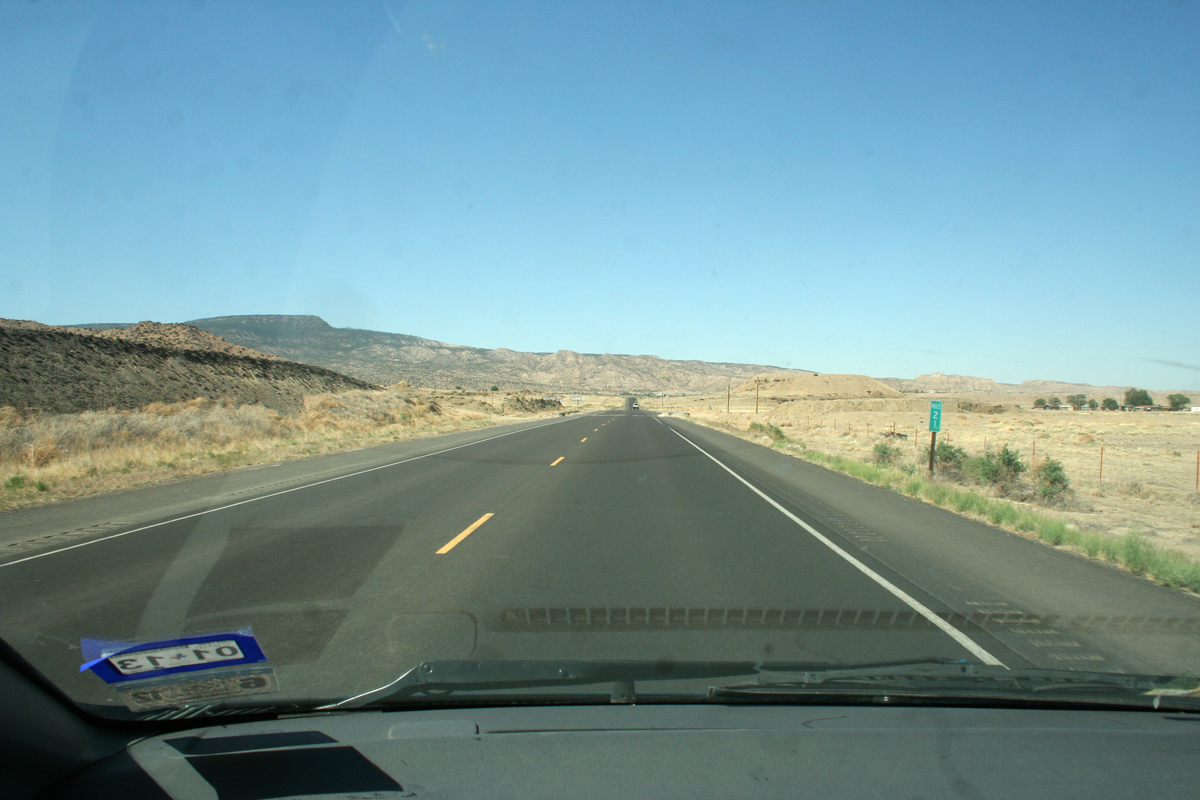
Just as we were about finished, another car stopped and called out to us. Apparently he had found a better place just to the east, up on top of the hills where we could get a better view of the eclipse. With less that an hour before the eclipse was to start, we both set speed records in packing down our telescopes and getting back on the road!!
After reaching the new location we all started setting up our equipment on a flat patch of ground on the side of the road that was wide enough that any passing traffic would not be a problem. Eventually several other cars stopped to join us, resulting is a sizable group by the time the eclipse started. This made it all the more fun.
My main objective for the eclipse was to use my 5" refractor and Canon DSLR in photograph the eclipse. I used a laptop computer to control the camera, setting it to take an image every 30 seconds during the partial stages, and then every 5 seconds during the annular phase. Periodically, I had to recentre the Sun as the telescope could not be accurately polar aligned. Beyond photography, I also planned to observe the eclipse both naked-eye and with another small telescope I had brought along. My main concern was that the computer battery would last long enough to image the entire eclipse!
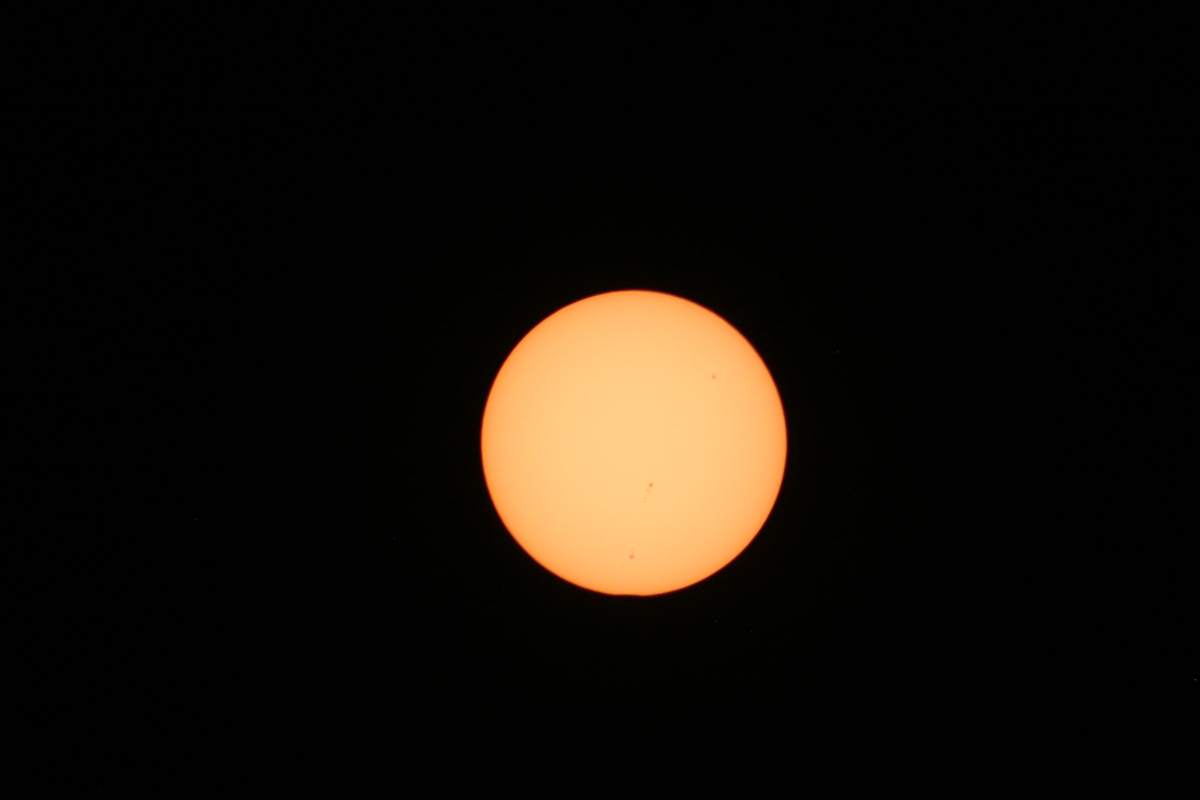
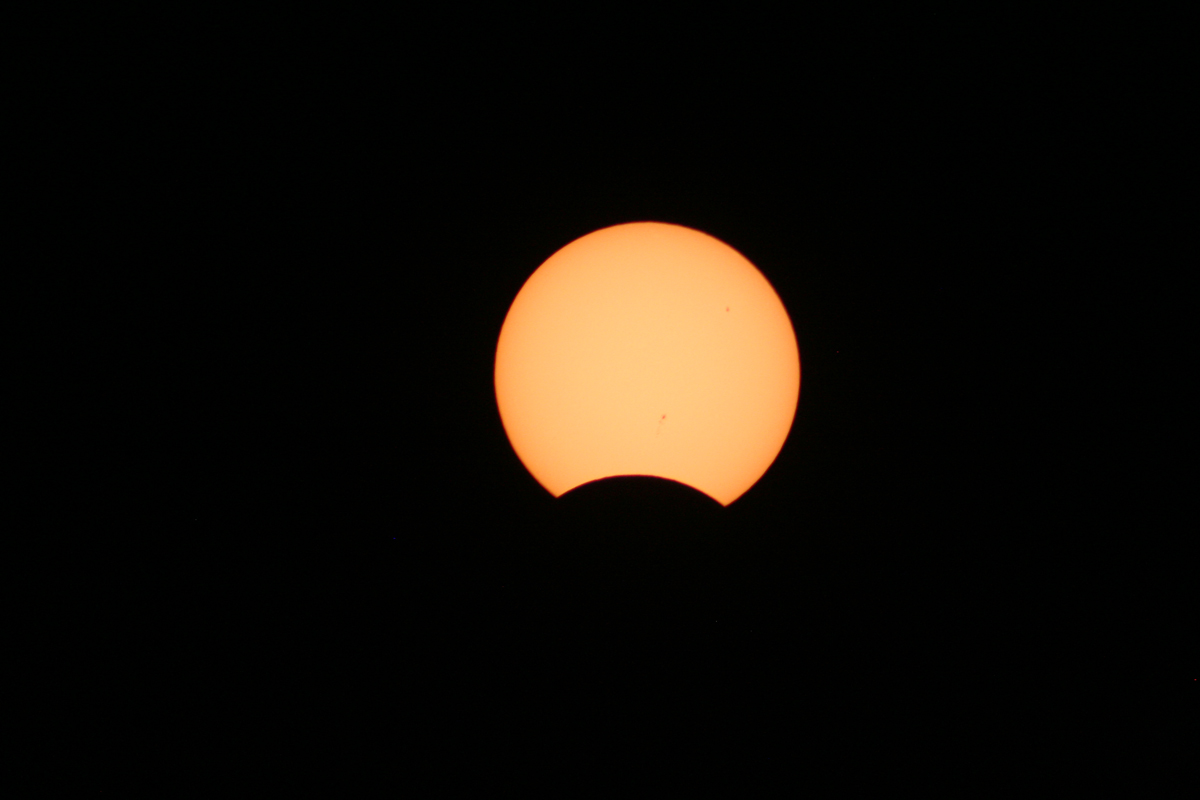
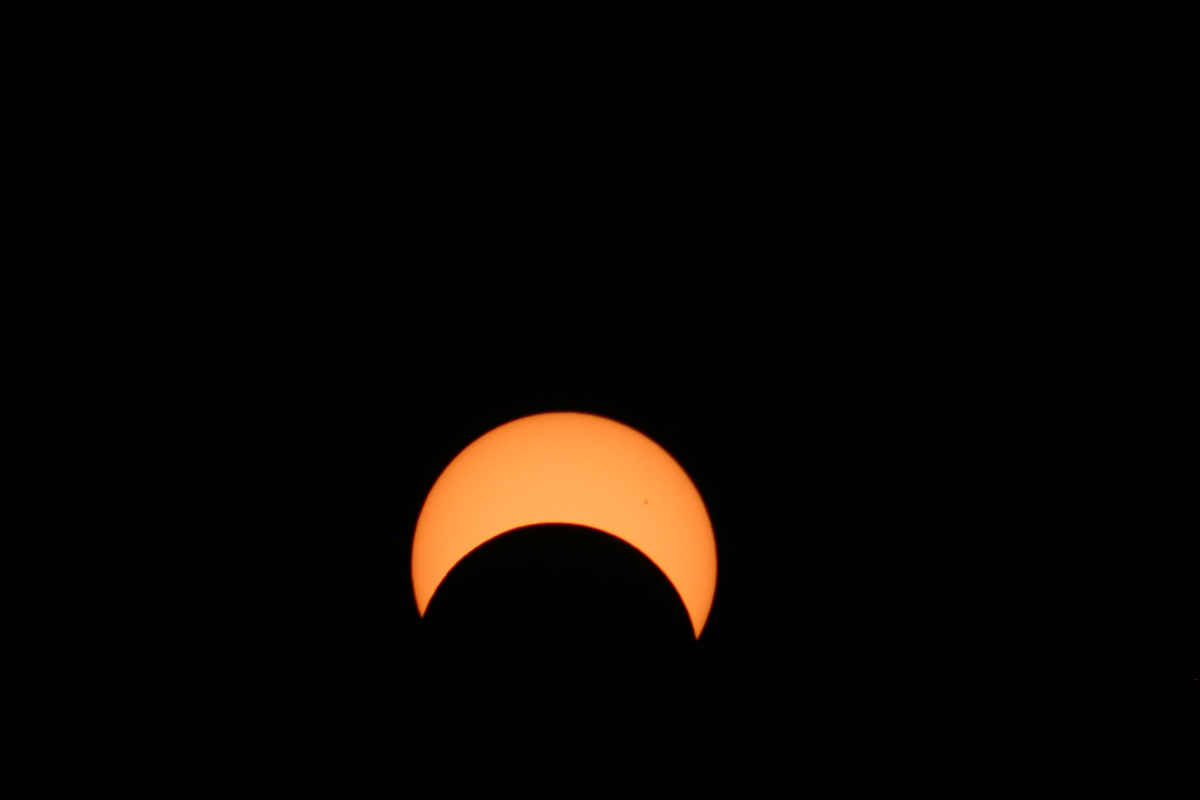
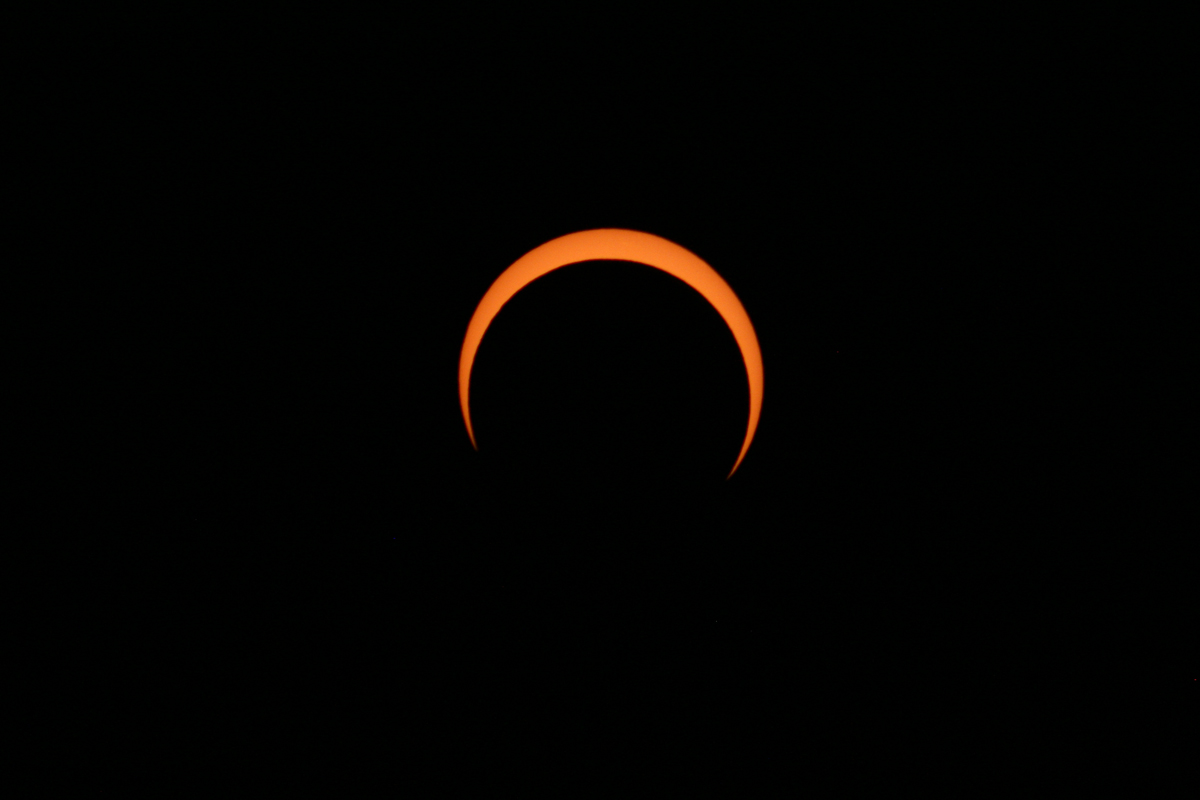
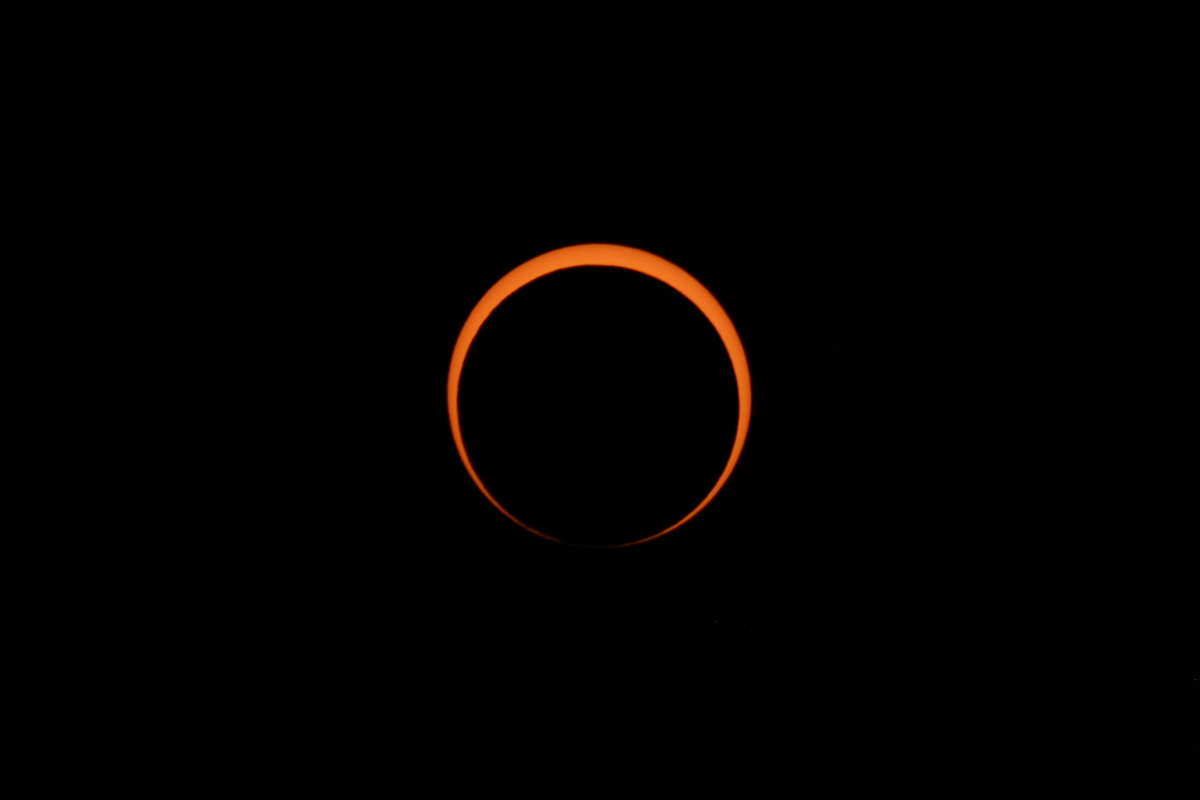
One thing I enjoy watching as annularity approaches are the rapidly extending horns of the Sun's crescent as they extend around the Moon. Also, notice how the Sun is getting dimmer and redder as it gets lower towards the horizon. During the annular phase, it was only about 8 degrees above the horizon.
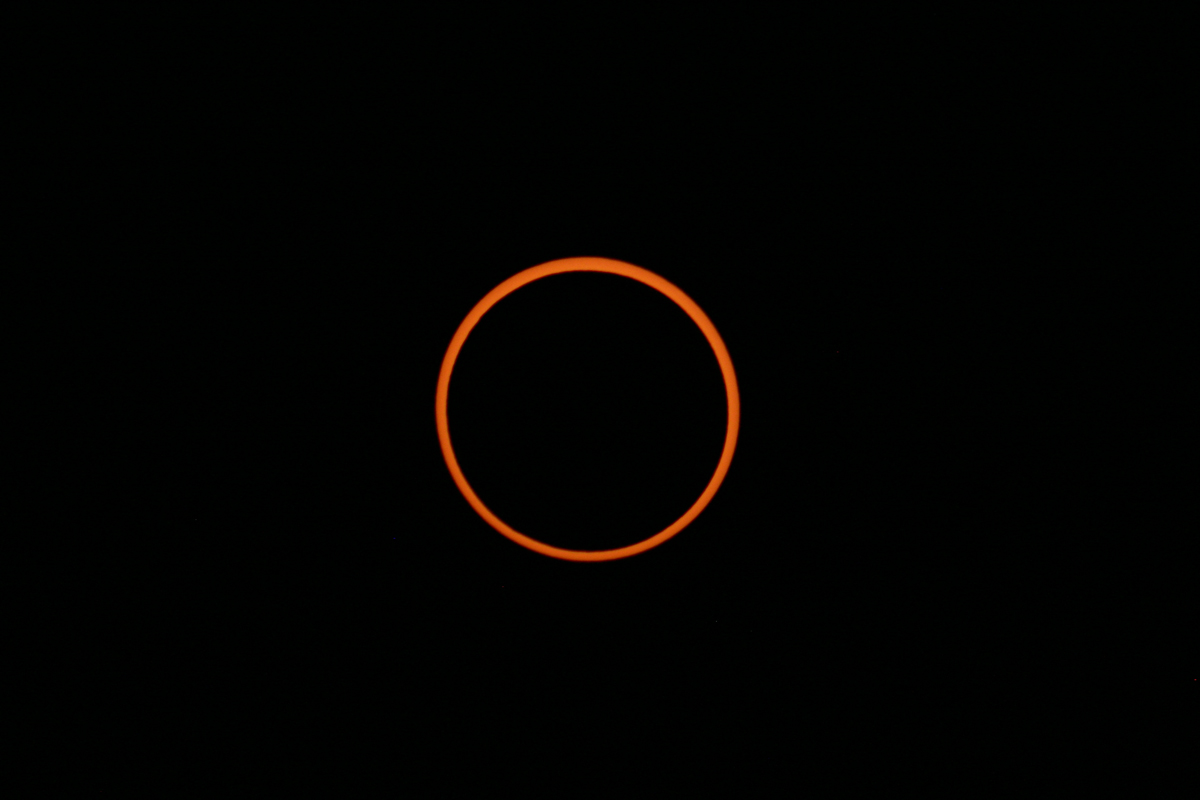
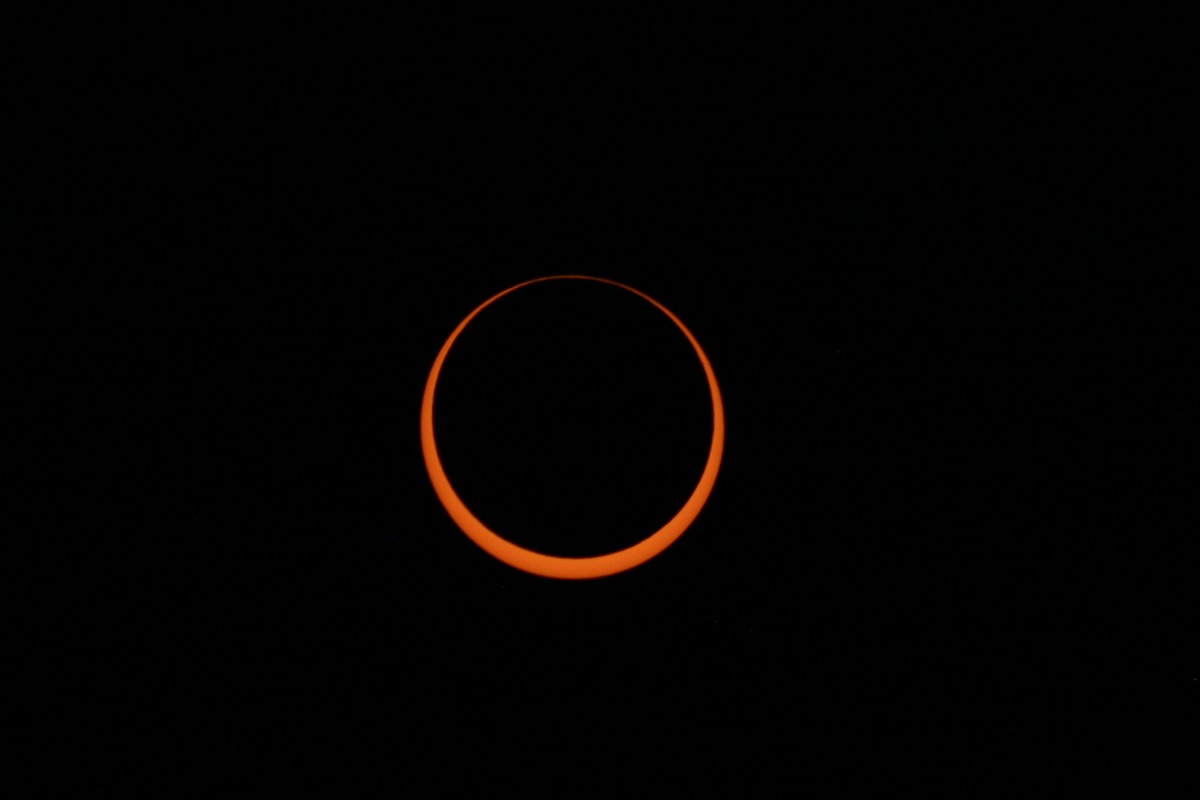
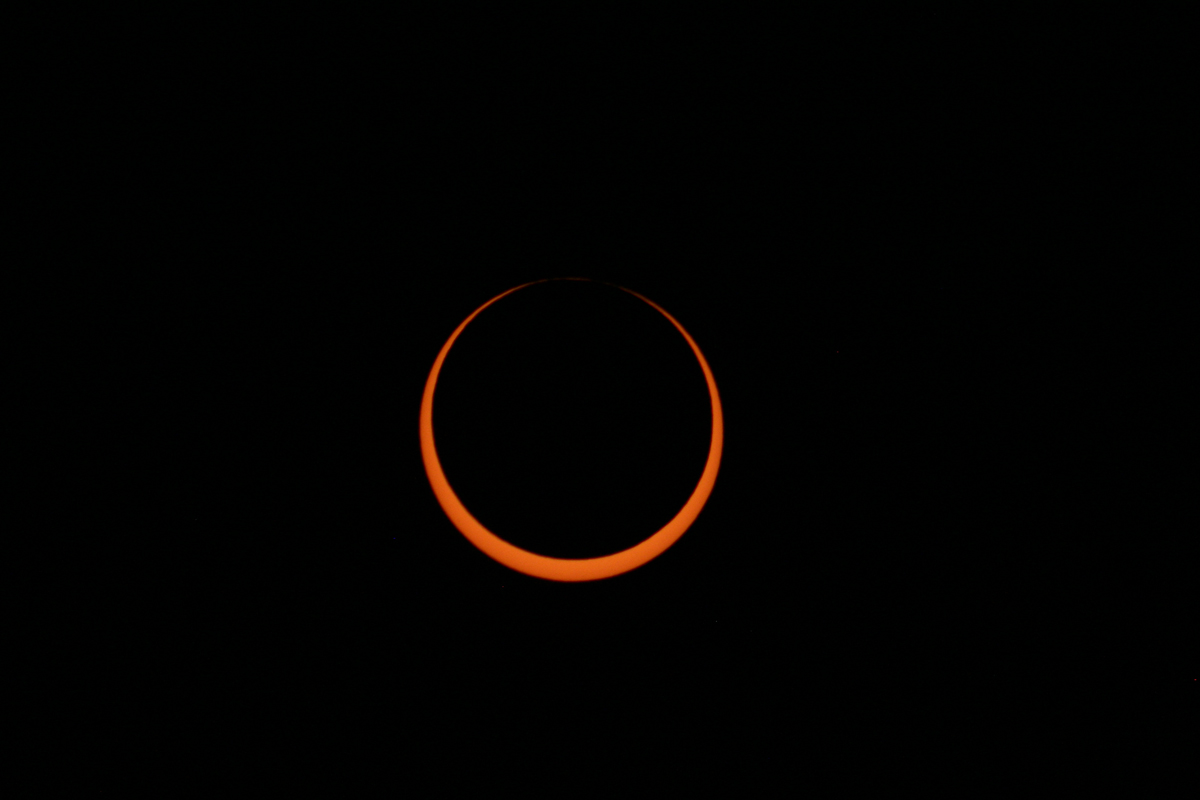
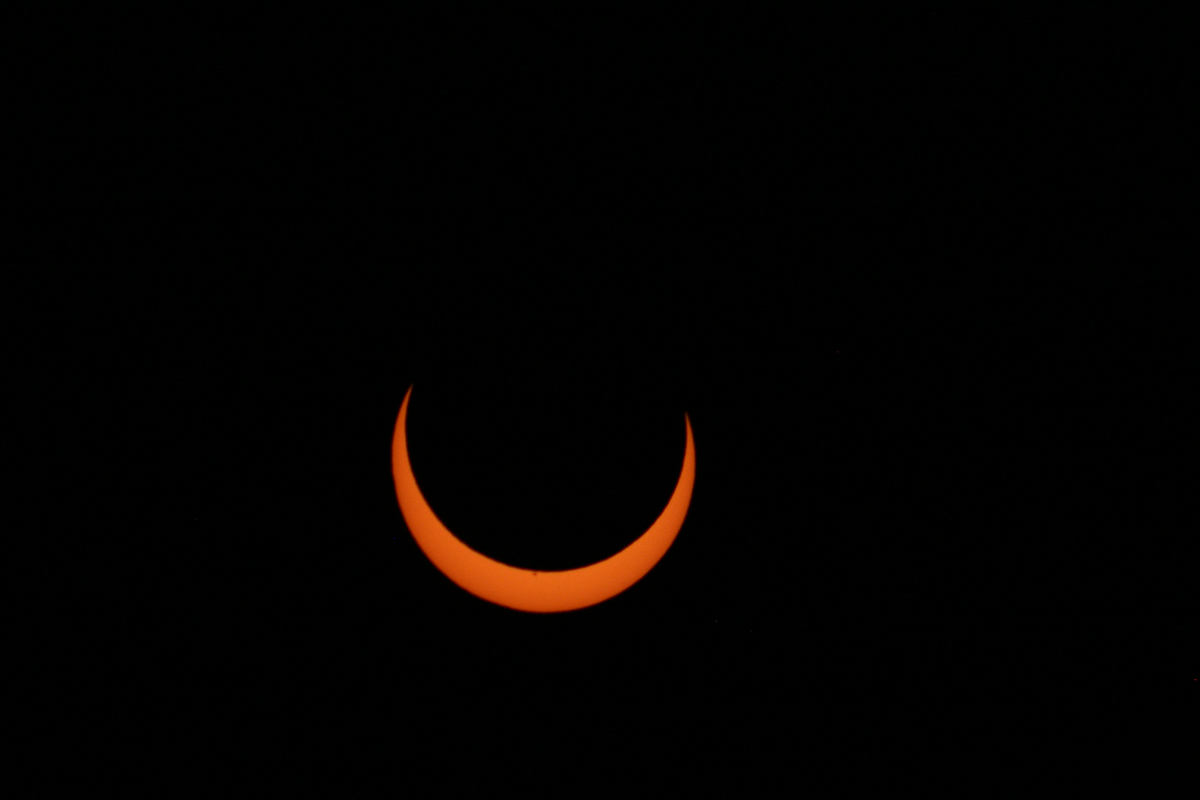
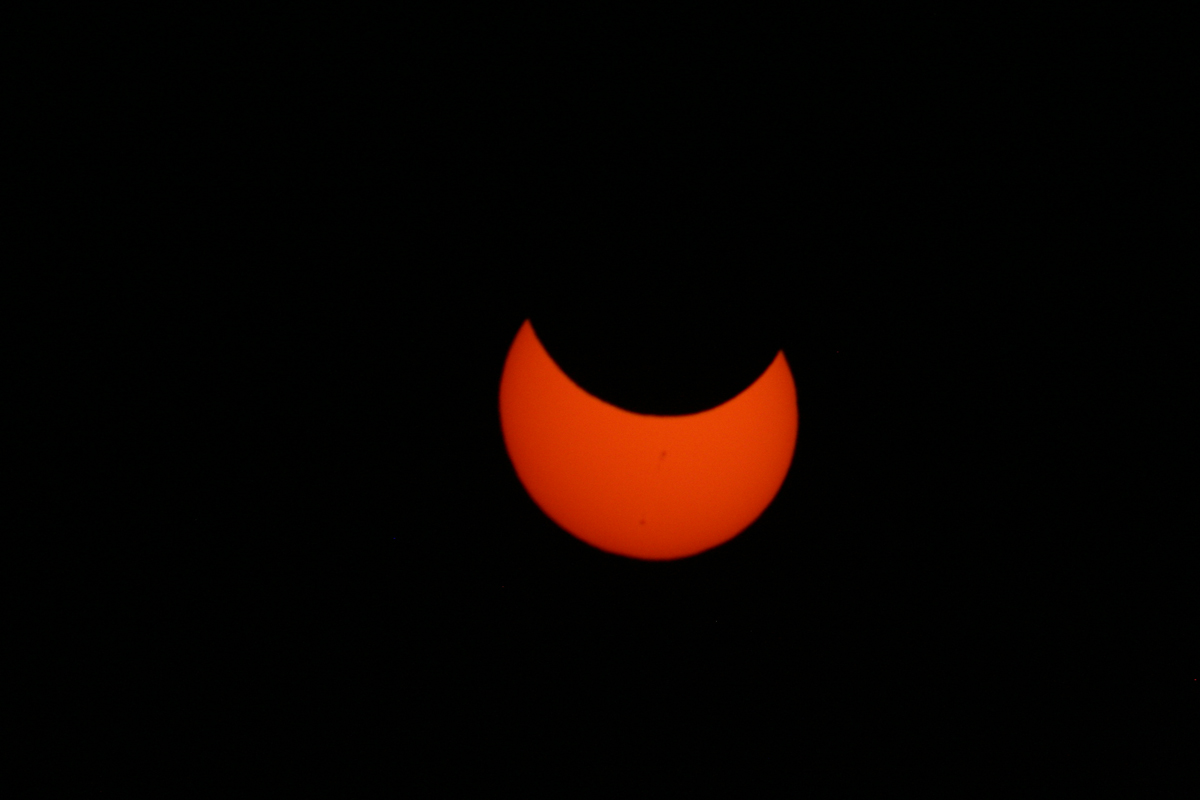
As the Sun touched the horizon, I noticed something strange appearing on my images. I soon realised that I had mis-judged where the Sun would be setting and so had managed to put the only large bush in the area right in line with the setting Sun!!!!!!! :-( At that moment the computer also died, so I took the camera off the telescope and grabbed a few wide-field images as the Sun set.
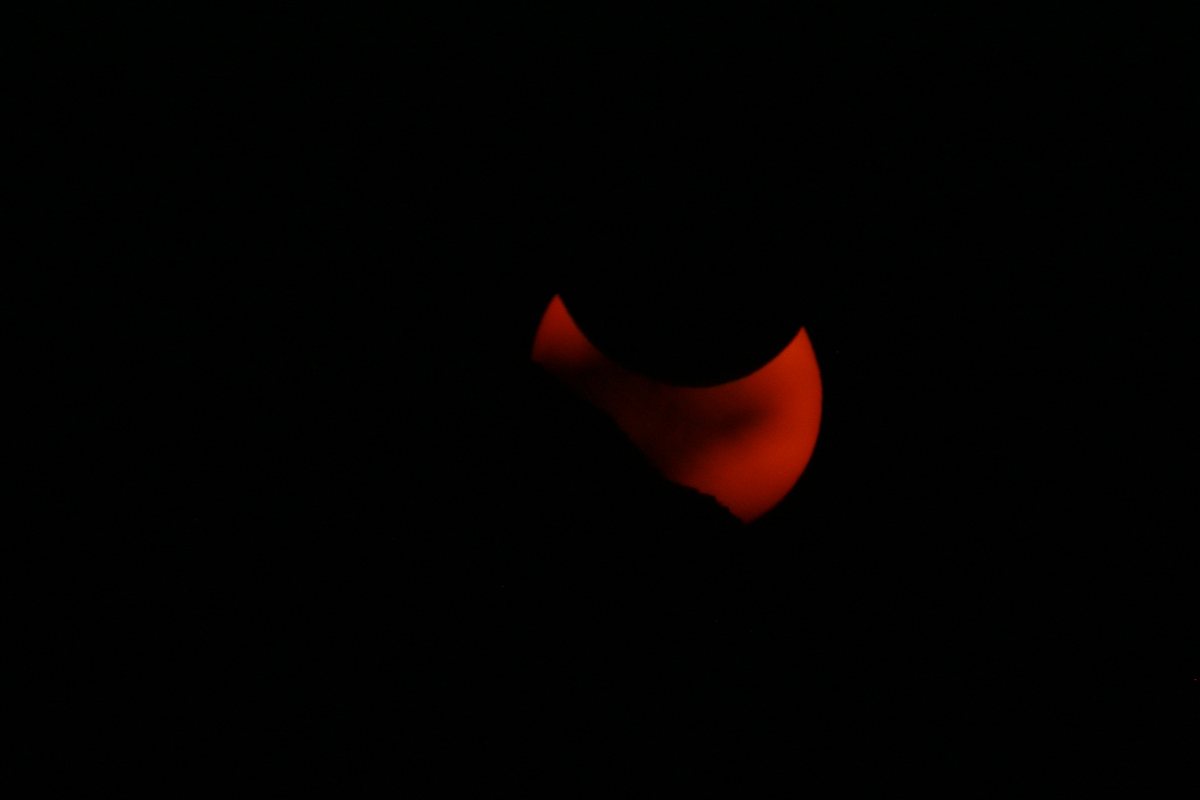
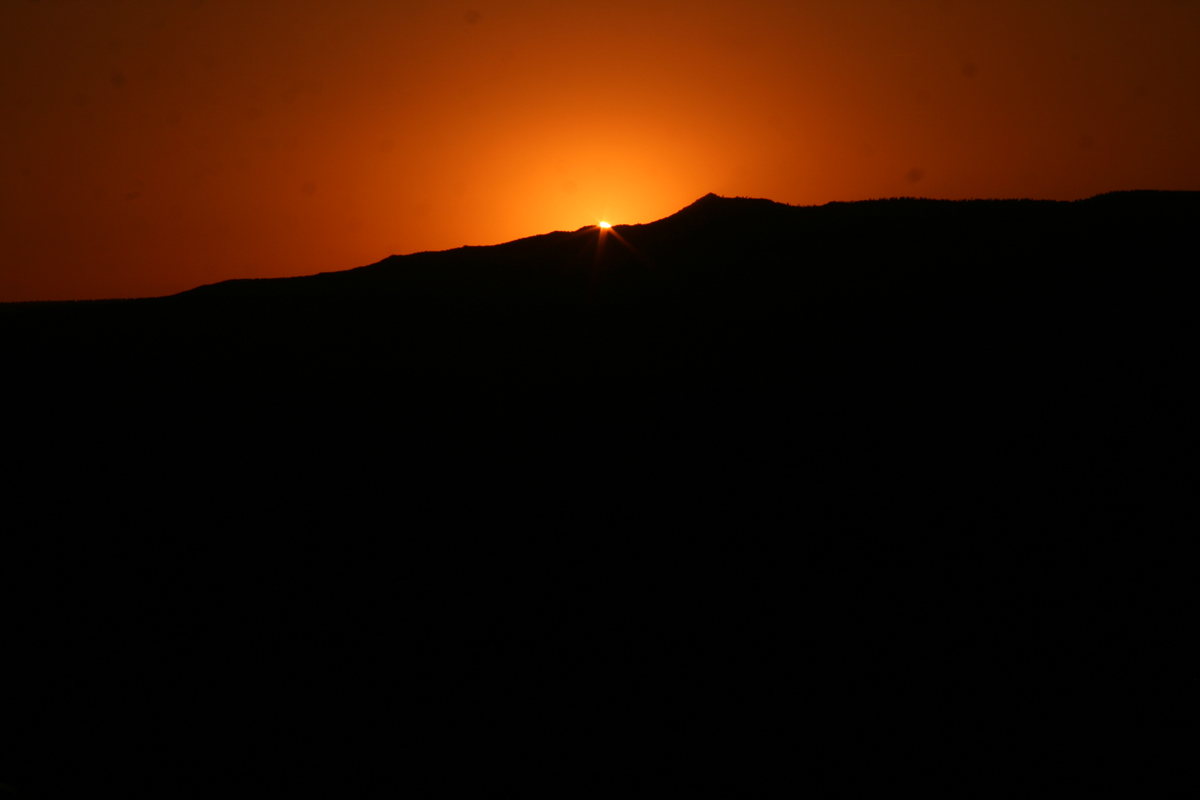
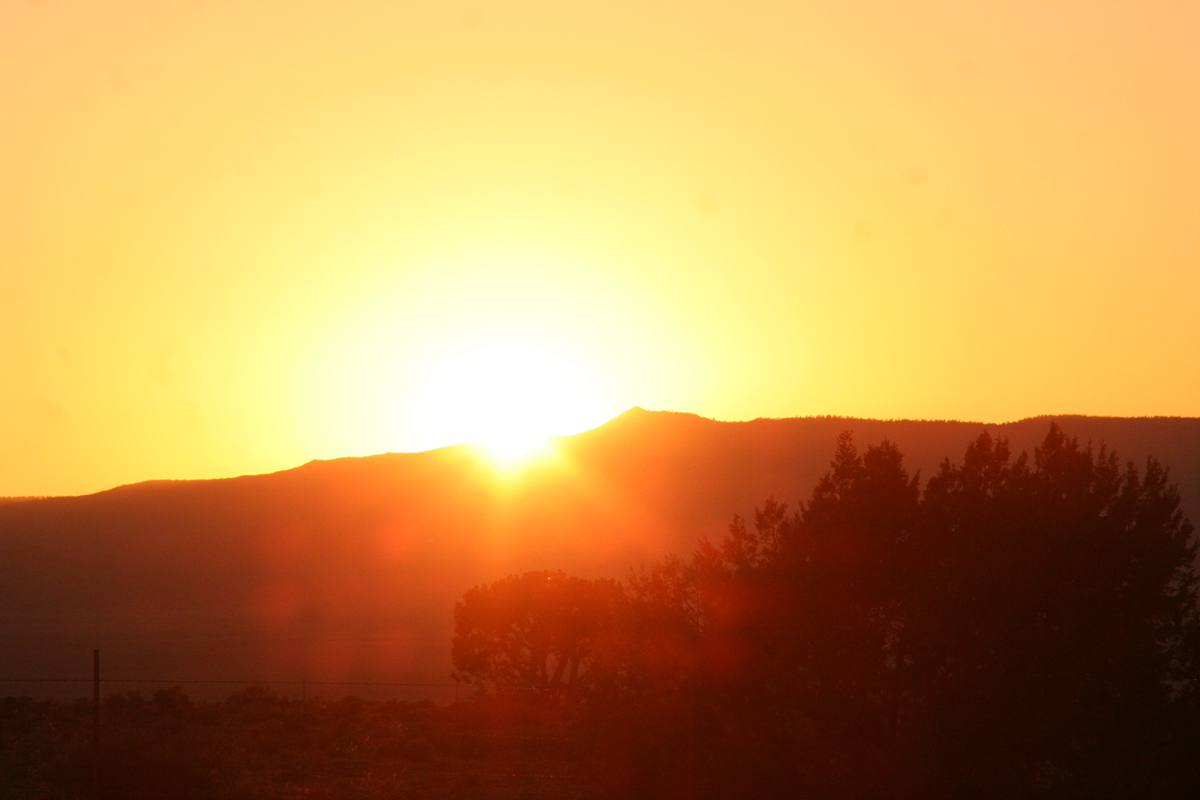
I did assemble all of the images I took into a movie, however the Sun does jump around a lot due to the inaccurate tracking, which is a little distracting. Unfortuneately I have been unable to locate any software that would align the images for me and to date I have not had any time to do it manually. The movie can be seen using the link below. Be warned however, it is around 520MB in size!
In the end, everything worked very well. The sky remained cloudless, the telescope and camera worked fine, and the computer lasted until just a couple of minutes before the Sun set. Altogether I managed to take in excess of 200 images, a few of which are shown below. There was also time to watch the eclipse, to chat with the other observers, and to look at the patches of sunlight shining through the leaves of small bushes. When the Sun finally set, it was the end of a great eclipse!
When I finally arrived back home 3 weeks later, I found out that I had been extremely fortunate in observing the eclipse away from town. Apparently those who stayed only managed to see the early partial stages with the Sun disappearing behind clouds about 10 minutes before the annular phase.